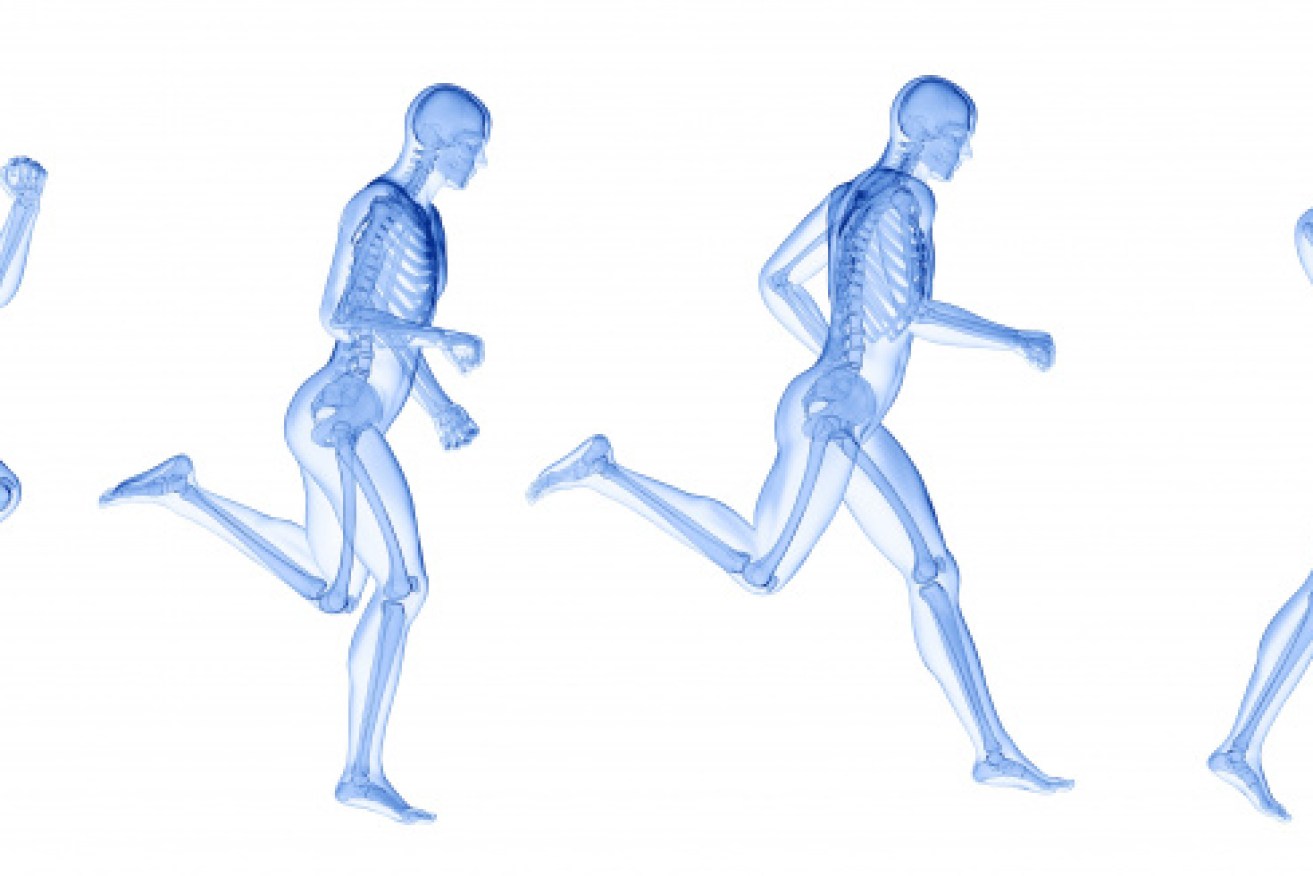Marvellous marrow: How exercise, even if it’s just walking, grows new bone and immune cells


Scientists have discovered bone-making cells lining the blood vessels in bone marrow. They keep us healthy. Photo: Getty
Scientists have identified a another way that exercise strengthens bones and immune function. And they also found how we get sick if we neglect our bone health.
For a long time it was held that mechanical pressure from walking, running or lifting weights stimulated bones to produce new bone cells and lymphocytes – the B and T cells that work to fight infections.
The hard bone was believed to absorb all the shock from exercise or other movement, insulating the marrow inside bones.
This was wrong
Scientists at the Children’s Medical Center Research Institute (CRI) in Dallas, Texas, have identified a specialised environment, known as a “niche”, in bone marrow – and it’s in this niche where the new bone and immune cells are produced.
The study also found that “movement-induced stimulation is required for the maintenance of this niche, as well as the bone and immune-forming cells that it contains”.
In other words, it is movement that keeps not only our bones strong, but helps our illness-fighting capability.
In other words, use it or lose it
According to a statement from the CRI:
- The researchers discovered that forces created from walking or running are transmitted from bone surfaces along arteriolar blood vessels into the marrow inside bones.
- These blood vessels, known as arterioles, are small arteries that feed blood into capillary beds.
- Bone-forming cells that line the outside of these blood vessels sense these forces and are induced to proliferate.
- This allows the formation of new bone cells, which helps to thicken bones. But the bone-forming cells also secrete a growth factor that increases the frequency of cells that form lymphocytes around the arterioles.

Researchers have discovered a niche in the bone marrow where new bone and immunity cells are made from the mechanical pressure of exercise. Photo: UT Southwestern
And this is where the mice come in
The scientists tinkered with this process in mice by “switching off the ability of the bone-forming cells to sense pressure caused by movement.”
The result? It reduced the formation of new bone cells and lymphocytes, causing the mouse bones to become thinner, and reduced the ability of the mice to clear bacterial infections.
“As we age, the environment in our bone marrow changes and the cells responsible for maintaining skeletal bone mass and immune function become depleted,” said Dr Sean Morrison, director of CRI, in a prepared statement.
But can exercise reverse the cell-dying effects of ageing?
Dr Morrison said “very little” was known about how this environment changes (the niche in the bone marrow) or why these cells decrease with age.
To see if bone-loss could be reversed, Dr Bo Shen, a postdoctoral fellow in Morrison’s laboratory, gave the mice running wheels for exercise. Mice love to run.
He found the bones of these mice became stronger with exercise, while the number of bone-making cells and lymphocyte progenitors around the arterioles increased.
See here for advice from the Mayo Clinic on bone health.








